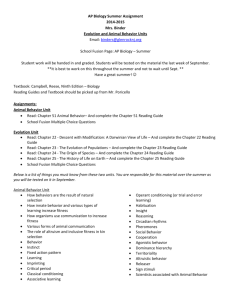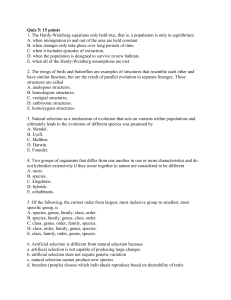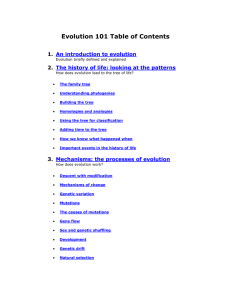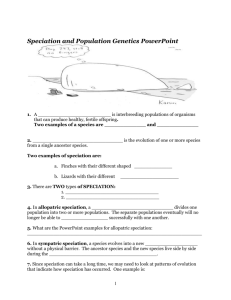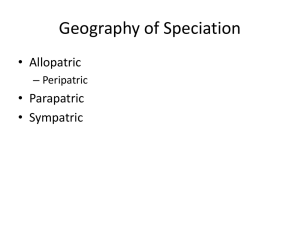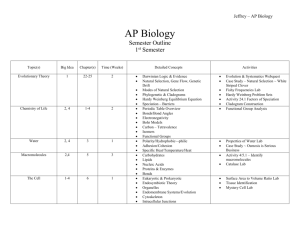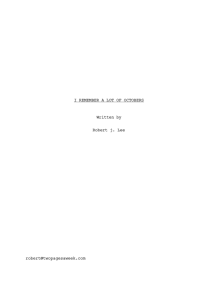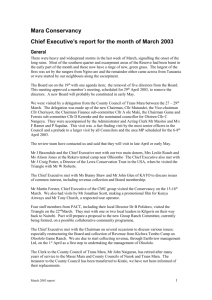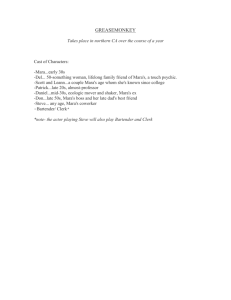Evolution Unit Review
advertisement
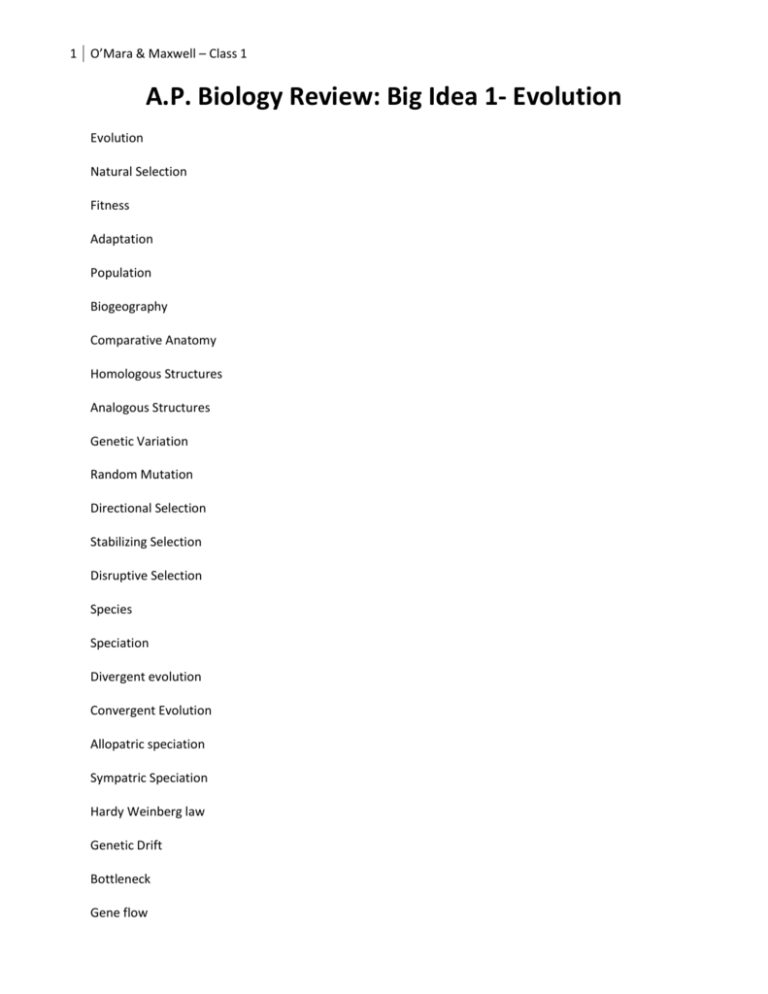
1 O’Mara & Maxwell – Class 1 A.P. Biology Review: Big Idea 1- Evolution Evolution Natural Selection Fitness Adaptation Population Biogeography Comparative Anatomy Homologous Structures Analogous Structures Genetic Variation Random Mutation Directional Selection Stabilizing Selection Disruptive Selection Species Speciation Divergent evolution Convergent Evolution Allopatric speciation Sympatric Speciation Hardy Weinberg law Genetic Drift Bottleneck Gene flow 2 O’Mara & Maxwell – Class 1 Evolution Review Sheet 1. What were the physical observations Darwin made during his journey on the HMS Beagle. How did these physical observations manifest or solidify Darwin’s theory 2. Put the following terms in relative size order from smallest to largest. Species, population, individual, gene, gene pool, range 3. Why is the phrase man descended from apes incorrect? 4. Define the term macroevolution and microevolution. Give an example of each. 5. Define the models of evolution: Gradualism and Punctuated Equilibrium. State evidence for and against each. 6. The term “species” is a critical yet difficult to define term. Define the term “biological species” and state the limitations of the definition. What are boundaries for keeping species separate? 7. Sympatric species are species that are living within the same area at the same time so that they have the opportunity to interbreed. Describe sympatric speciation and include an example. 8. Allopatric species occupy area separated by time and space. Describe a potential case for allopatric speciation. 9. Consider the three species of the 17 year cicadas, M. septensencium, M. cassini, and M. sepentendecula. The members of the three groups emerge at the same time. They differ slightly morphologically and can be found on the same tree. 3 O’Mara & Maxwell – Class 1 The chorus of the M. setendecium is most intense in the morning, an even monotonous, nonsynchronized buzzing. The chorus of M .Cassini is most intense in the afternoon, a shrill, synchronized buzzing that rise and falls in intensity. The chorus of the M.sepentendecula is most intense about midday, a continuous, nonsynchronized repeats of short separate buzzes. Why are they maintaining themselves as discrete species? Since they can reproduce fertile offspring but simply don’t, are they separate species? Is there another taxon that would be appropriate? 10. The Hardy Weinberg equation can be used as tool. State an example how the equation can be used as tool. 11. Hardy Weinberg equations give predicted of the frequency of alleles in a population. What conditions must be met for the frequencies to stay in HW equilibrium? 12. Explain genetic drift, Founder effect, bottle neck effect. 16. How have the Galapagos Finches illustrated adaptive radiation? 17. The hummingbird and the sphinx moth both show adaptations for probing flowers for nectar, a long bill and extended mouthparts and both of a rapid hovering mode of flight. What is the explanation for these two species having such similar adaptation? 18. What is a phylogenetic tree? A cladogram? Can you create example of each? 4 O’Mara & Maxwell – Class 1 The above graph highlights trichrome number found on a particular species of plant. Explain the results and suggest what type of experiment was executed to achieve the data of the second generation. 5 O’Mara & Maxwell – Class 1 Using your understanding of evolution, explain the differences in the data shown above. 6 O’Mara & Maxwell – Class 1 1.A. Change in the genetic makeup of a population over time is evolution. 1.A.1 Natural selection is a major mechanism of evolution. 1.A.2 Natural selection acts on phenotypic variations in populations. 1.A.3 Evolutionary change is also driven by genetic drift and artificial selection. 1.A.4 Biological evolution is supported by evidence from many scientific disciplines. 1.B. Organisms are linked by lines of descent from common ancestry. 1.B.1 Organisms share many conserved core processes and features that evolved and are widely distributed among organisms today. 1.B.2 A phylogenetic tree and/or a cladogram is a graphical representation (model) of evolutionary history that can be tested. 1.B.3 Non-eukaryotes can transfer genetic information laterally through the mechanisms of transformation, transduction and conjugation; most eukaryotes do not transfer information laterally. 1.C. Life continues to evolve within a changing environment. 1.C.1 Speciation and extinction have occurred throughout the Earth’s history. 1.C.2 Speciation may occur when two populations become reproductively isolated from each other 1.C.3 Populations of organisms continue to evolve. 1.D. The origin of living systems is explained by natural processes. 1.D.1 There are causal models about the origin of life on Earth. 1.D.2 Evidence from many different scientific disciplines supports models of the origin of life.
